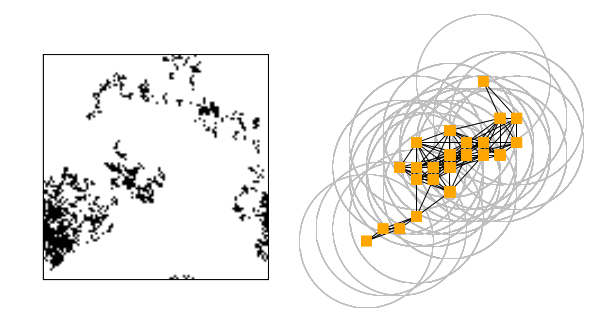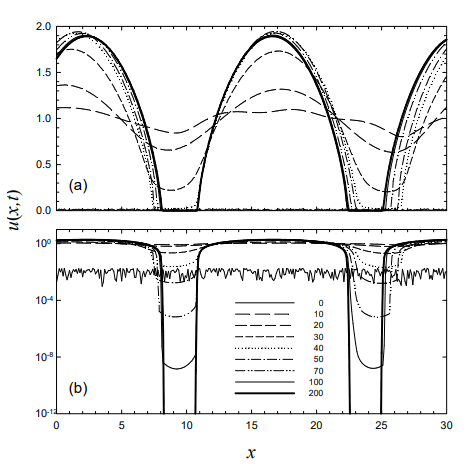Gallery
Predator-prey dynamics with evolution from ecolombo on Vimeo.
The evolutionary path of traits that regulate individual-level interactions depends on the species spatial distribution. But also, the traits that emerge from the evolutionary dynamics reshape the spatial distribution. This estabilishes an eco-evolutionary feeback that controls important community outcomes, such as coexistence times and species extinction probabilities. [more info] 
Here you see spatial patterns induced by landscape defects. Landscape hetereogenity can be used as lens revealing details about the individual-level interaction that, otherwise, would be hidden in a homogeneous landscape. [more info]

Criticality vs. Heterogeneity: for a weakly-coupled metapopulation model, we obtain the heterogeneity class that generates power-laws in the aggregated dataset. In this perspective, we show the possibility of equivalence between heterogeneous weakly-coupled metapopulations and homogeneous ones that exhibit critical behavior. [more info]

Habitats commonly exibith variability in a wide range of scales. On top of that, depeding on the level of spatial information acessed by the individuals, dispersal strategies might vary from random (uninformed) to selective (informed). The combination of these both facts determine the metapopulation network, critically affecting important macroscopic outcomes. [more info]

Larger habitat is not always better for population survival. [more info]

Density-depedent feedbacks can promote population self-fragmentation, creating isolated clusters - separated by zero density regions. [more info]

Population spatial dynamics couples environment spatial and temporal aspects making survival dependent on an interplay of both. [more info]
